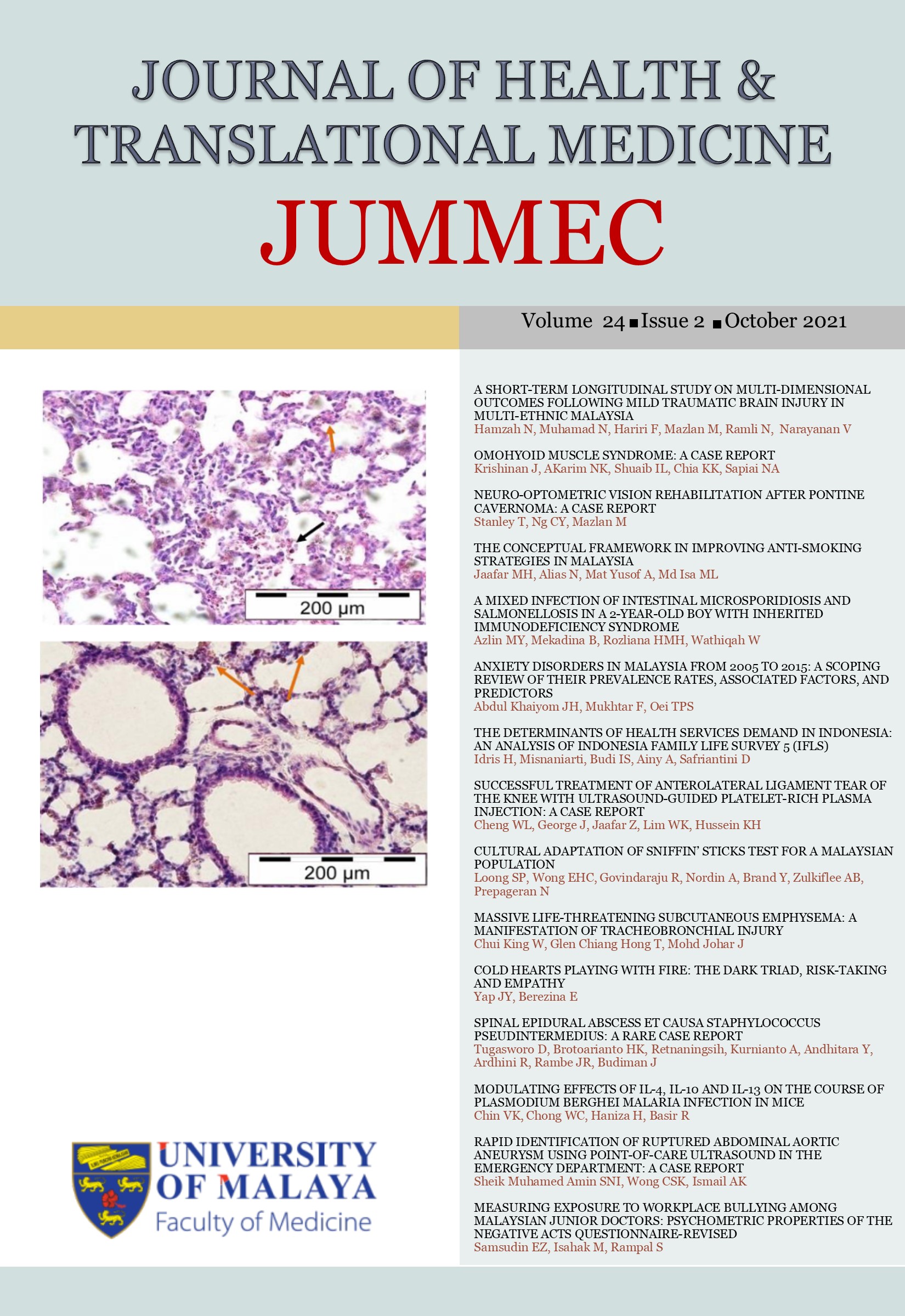THE CONCEPTUAL FRAMEWORK IN IMPROVING ANTI-SMOKING STRATEGIES IN MALAYSIA
Received 2020-01-23; Accepted 2021-01-07; Published 2021-09-15
DOI:
https://doi.org/10.22452/jummec.vol24no2.4Keywords:
Conceptual Model, Anti-smoking Campaign, Health Care Providers, Smoking Cessation ClinicsAbstract
This paper proposes a conceptual model for establishing a new approach to improvise anti-smoking strategies. The Tobacco Control programme under the World Health Organization (WHO) has established MPOWER measures to be applied globally. Although numerous approaches have been implemented, there is a knowledge gap pertaining to the positive impact of these strategies. Therefore, analyzing current approaches and establishing new strategies will be beneficial for the tobacco control movement. The proposed model has been adapted from the Medical Research Council (MRC), United Kingdom framework for complex interventions which can be used as reference for researchers to develop a new initiative or strategy for tobacco control. This proposed model incorporates three phases, which are (i) Phase 1: To identify factors influencing stop smoking desires and their successfulness among “specific location” population, (ii) Phase 2: To analyse available smoking cessation strategies globally using systematic review, and (iii) Phase 3: To develop new potential tools/products/guidelines for anti-smoking promotions based on Phase 1 and 2. The novelty of this concept in developing anti-smoking strategies is the incorporation of local needs in Phase 1. This research may contribute significantly to stop or quit smoking behavior among Malaysians. At the end of this study, researchers will be able to recommend new and/or adapted tools/products/guidelines based on the framework discussed. Also, government regulations regarding cigarettes should be properly reviewed in order to achieve more significant results whilst minimizing expenses for anti-smoking campaigns.
Downloads
Downloads
Published
Issue
Section
License
All authors agree that the article, if editorially accepted for publication, shall be licensed under the Creative Commons Attribution License 4.0 to allow others to freely access, copy and use research provided the author is correctly attributed, unless otherwise stated. All articles are available online without charge or other barriers to access. However, anyone wishing to reproduce large quantities of an article (250+) should inform the publisher. Any opinion expressed in the articles are those of the authors and do not reflect that of the University of Malaya, 50603 Kuala Lumpur, Malaysia.


